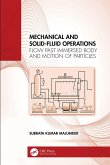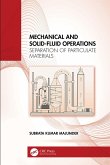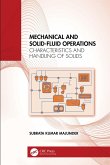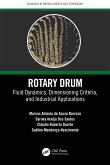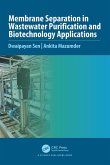This book:
- Introduces the principle of separation methods of particulate matter (PM), common control equipment of PM, and collection or removal efficiency of the equipment
- Describes the concept of separation of particles by sieving/screening, the basic principles of screening equipment, and the screen's effectiveness
- Present the fundamental theories of removing particulate and gaseous pollutants from effluent streams by pollution control operations, such as gravitational (gravity chambers) and centrifugal deposition (cyclone separator), electrostatic precipitation, filtration, and wet scrubbing and covers fundamental principles of membrane separation, membrane modules, process design, applications, and governing equations of plate and frame filter press and rotary drum filter
- Deals with the basic understanding of reverse osmosis and its theoretical analysis by different total flux and capacity models and explains the basic understanding of adsorption onto the solid surface and their isotherm and kinetics
- Includes ancillary material such as numerical problems, review questions, multiple choice questions, and exercises at the end of each chapter
It is primarily written for senior undergraduates, graduate students, and academic researchers in chemical engineering, mechanical engineering, environmental engineering, industrial engineering, manufacturing engineering, and chemistry.
Dieser Download kann aus rechtlichen Gründen nur mit Rechnungsadresse in A, B, BG, CY, CZ, D, DK, EW, E, FIN, F, GR, HR, H, IRL, I, LT, L, LR, M, NL, PL, P, R, S, SLO, SK ausgeliefert werden.



